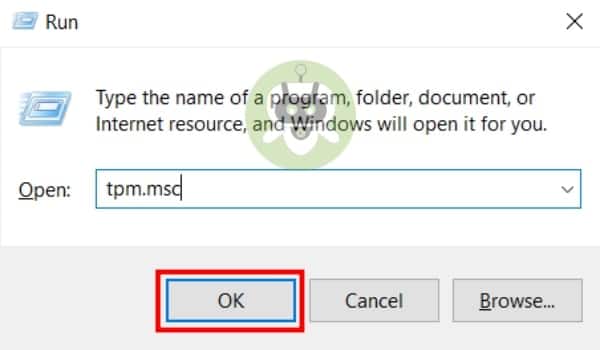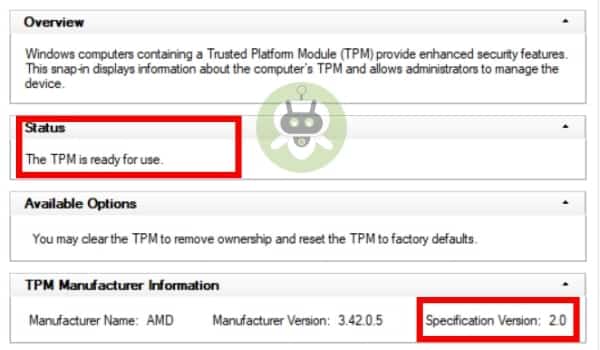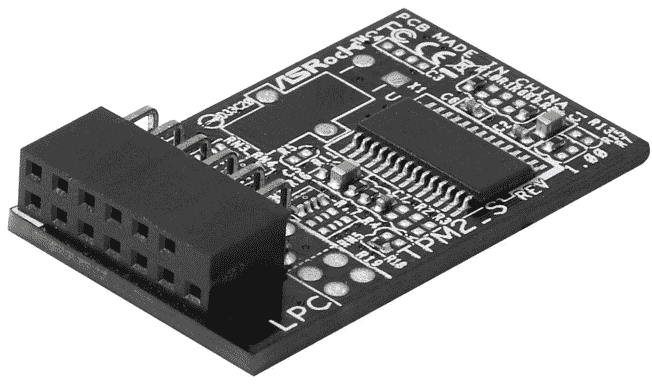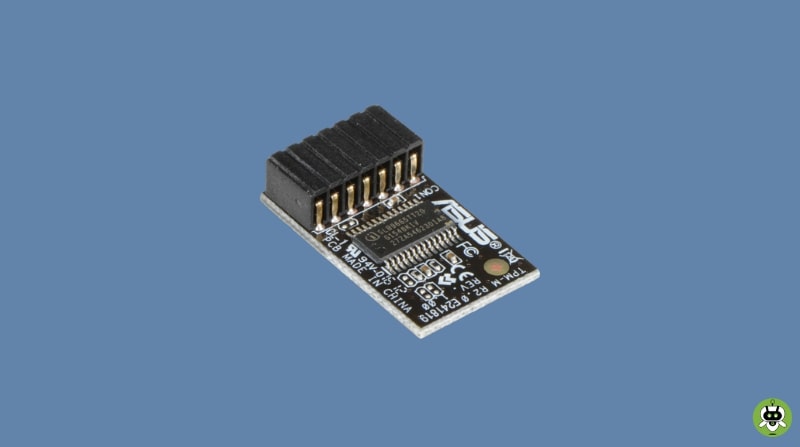TPM Chip is been used since 2011 in PCs for commercial purposes. Recently, it’s been in news because of Windows 11. The upcoming version-Windows 11 listed the TPM chip as the minimum system requirement for its installation. Since then it has become a crucial topic and so we came up with the article. Here, you will learn, what is a TPM chip? Why does Windows 11 require it? How do you know if your system already has it or not? And more about the TPM chip.
What is a TPM chip?
In a TPM chip, TPM stands for ‘Trusted Platform Module‘. It is also known as ‘ISO/IEC 11889’, an international standard for a secure cryptoprocessor. It has a dedicated microcontroller designed to secure hardware by creating integrated cryptographic keys.
TPM is a tiny chip typically in-built on a motherboard. But in case if it’s not on the motherboard, you can manually set it up while building your PC.
What is its purpose?
A TPM chip’s prior aim is to ensure the integrity of a platform by offering high security to computers at the hardware level. More often called crypto-processor not only secure and protect data from threats but encrypt data as well.
In basic terms, it performs tasks like generating encryption keys and prevents both hardware and software from tampering. It is also used for device identification, authentication, encryption, and device integrity verification.
The maker TCG explains,
“Discrete TPM protects your device from being hacked, via even sophisticated methods. To accomplish this, a discrete chip is designed, built, and evaluated for the highest level of security that can resist tampering with the chip, including probing it and freezing it with all sorts of sophisticated attacks.”
Where is it used?
Recently, the upcoming Windows 11 requires a TPM chip as a minimum system requirement for its installation. Apart from this, it is also been used by companies and for commercial purposes PCs to prevent data from malware attacks and tempering.
Major sectors where TPM security is used include enterprises, industrial and medical computers. Because the most sensitive data is stored and exchanged in these sectors. Hence, to secure it from thieves, hackers, and malware, TPM chips are used to double the protection along with software-enabled security tools.
Notably before 2011, not all motherboards incorporated a TPM chip inside them. Later typically, all motherboards came up with it. However, low-cost PCs especially sold in India are its exception, many PCs still don’t have an inbuilt TPM chip.
How does it exactly work?
TPM chip uses an algorithm that begins its task when you boot your computer. It tests out the computer system and its environment. During the operation, it analyzes if the computer is in a trustworthy state. Here, a trustworthy state refers to the computer being not tampered with anything. And, if the system looks good, it starts the computer normally.
On the other hand, if it detects any untrustworthy threat, the computer will not start normally. Thus, no operation can be executed and it will prevent your data from being hacked.
What if the hard drive is stolen or lost?
In case your hard drive is stolen or lost, it still protects your data. Luckily, a mechanism works even in such worst conditions.
A TPM chip is built to encrypt the data of your computer. While it does so, it uses the cryptographic method and generates encryption keys. These keys are nothing but encryption codes that creates a unique code and store half part to itself while saves half on the hard drive. Therefore, even if your hard drive is stolen, the absconder can’t extract any data/information stored in it.
Further, professional users take advantage of the chips to manage encrypted, key-signed messages in email clients. Besides, the chip is also been used by browsers such as Chrome as an advanced feature (like SSL certificates).
Why Does Windows 11 Require It?
At an event on 24 June, when Microsoft announced Windows 11, a list of minimum system requirements was also disclosed. And, TPM chip 1.2 (as a hard floor) and TPM chip 2.0 (as a soft floor) were one of these. They said,
“Devices that do not meet the hard floor cannot be upgraded to Windows 11, and devices that meet the soft floor will receive a notification that upgrade is not advised.”
However, after the backslash, Microsoft list down temporary health checkup app and lists TPM 2.0 as the only minimum system requirement. It was confusing at first, as it didn’t look considerable to its other users who are still using an older version.
Nonetheless, the company has cited some reasons on its blog where it explains how earlier measures got successful in reducing the malware attacks by 60%. If you think, Windows is the most popular and widely used OS, there is no doubt that it has been hackers’ favorite target. That’s why Windows needed high security.
Considering the fact, Windows previous versions, Windows 7 and Windows 10 also support TPM chips. Thereby, it would not be unjust to assume that the company wants to offer firm security to its users. And, TPM is what suits them best.
Why using TPM chips is a smart choice?
Initially, TPM was mainly used by big companies and businesses to secure their data. However, with time, the priority and need of it have changed. These days professionalism isn’t limited to the walls of a company but remote work is also been promoted. Thereby, employees also have sensitive data on their PCs and laptops as well.
Hence, TPM chip is a must thing for such employees. It will keep firm security and let you work flawlessly irrespective of where you’re.
Besides that, startups, small and medium enterprises, and other institutional entities do store their data on PCs. They have data related to transactions, other important documents, and more, which in a way can be a target of the threat. Hence, to prevent such happening, TPM chip can be the best tool alongside software ones.
Last yet important, in a company where hundreds or thousands of employees work under the same roof, data security is crucial. Alongside security, concerns are also high. Thus, to protect the data and keep employees’ actions in control, companies can take advantage of the TPM chip.
Does your system already has a TPM chip or not?
If you have purchased a PC/laptop after July 2016, it sure has a TPM chip inbuilt unless it is original and not the one build by yourself. It’s because you might not aware or would have not considered adding it.
On the other hand, you should check even in your own build PC, as it may be present but is disabled. To know if it is present or absent, try the methods mentioned below.
Run Dialog Box
Open the Run dialog box by pressing the Windows key + R. Then type ‘tpm.msc’ and click OK.


Here you will see a pop-up window. If you see a message detailing the TPM version and reads that it supports the TPM chip, you sure have a TPM chip. While if it reads, “compatible version does not found”, your PC doesn’t have a TPM chip.
Enable Computer Hardware
Sometimes it happens that your PC may have a TPM chip but is disabled in UEFI firmware or BIOS. In case it is deactivated, it won’t appear in Windows. To know and re-activate it, you have to hop into the BIOS screen settings, which may vary for each window version.
If you’re using an old PC, you may need to press specific keys like Delete, F12, or Escape—during the boot-up process. Look at the documentation details of your computer or motherboard.
On the other hand, if you’re using a modern PC, you may need to hop into the Windows 10 or 8 advance startup options menu.
Once you hop into the settings (old and modern pc), look for ”TPM/Trusted Platform Support”. If it is disabled then enable it, save the settings and restart your computer.
How can you install a TPM chip?
Usually, modern computers or computers manufactured after 2016 have a TPM chip inbuilt. However, if you’re building one by yourself, you can still add it. You can purchase a TPM via a store or online (Amazon, Flipkart, etc.).

In case you are using an old version computer that does not have the hardware to support it, there is no way to install it. Yet you can consult the company or the store.
Conclusion
TPM chip is a useful tool to protect sensitive data, it assures you security at the hardware level and allows you to work efficiently. Besides that, many assumptions might have occurred since Microsoft listed it as a minimum system requirement. So, this is all that we know ‘why does Windows 11 require a TPM chip?’ We hope this article helps you and adds something new to your knowledge. Also, write down your thoughts on the article, if it is useful for you.
Yes, you can disable the TPM chip.
Yes, TPM chips are safe and secure.
Yes, it is easy to install a TPM chip.

